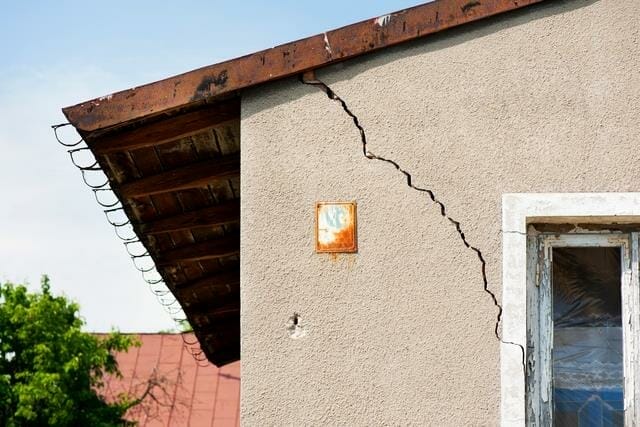If you want to take your homemade pizza to the next level, a rotating stone in your pizza oven is the way to go. With a rotating stone, you can achieve that perfect, crispy crust every time.
In this article, we’ll explore the benefits of using a rotating stone, help you choose the right one for your pizza oven, and provide a step-by-step guide on how to use it.
Plus, we’ll share some maintenance tips to keep your rotating stone in top shape.
So get ready to elevate your pizza game!
Key Takeaways
- A rotating stone in a pizza oven helps distribute heat evenly and ensures even cooking of the crust.
- It prevents burning or overcooking and achieves a crispy and golden crust, enhancing the quality of the pizza.
- When choosing a rotating stone, factors like size, material, and heat retention should be considered.
- Ceramic stones retain heat well, cordierite stones are durable, and cast iron stones create a crispy crust.
Benefits of a Rotating Stone in a Pizza Oven
One of the benefits of a rotating stone in a pizza oven is that it helps to evenly distribute heat. This cooking technique has several advantages.
Firstly, the rotating stone ensures that the pizza crust is evenly cooked. As the stone rotates, the heat is distributed uniformly across the entire surface of the crust, resulting in a perfectly baked pizza.
Secondly, the rotating stone helps to prevent burning or overcooking of certain areas of the pizza. By constantly moving the pizza, the stone ensures that no part of the crust is exposed to excessive heat for too long. This leads to a more consistent and delicious end product.
Lastly, the rotating stone also helps to achieve a crispy and golden crust, adding to the overall texture and taste of the pizza.
Overall, using a rotating stone in a pizza oven is a highly effective cooking technique that enhances the quality of the pizza.
How to Choose the Right Rotating Stone for Your Pizza Oven
To choose the right rotating stone for your pizza oven, it’s important to consider factors like size, material, and heat retention.
When comparing rotating stones to stationary ones, there are pros and cons to both options. A rotating stone allows for even heat distribution, resulting in a perfectly cooked pizza crust. It also helps to prevent burning, as the stone constantly moves the pizza around. However, rotating stones can be more expensive and require additional maintenance.
There are different types of rotating stones available for pizza ovens, such as ceramic, cordierite, and cast iron. Ceramic stones are known for their excellent heat retention, while cordierite stones are durable and resistant to thermal shock. Cast iron stones are great for achieving a crispy crust.
Consider these factors when choosing the right rotating stone for your pizza oven.
Step-by-Step Guide to Using a Rotating Stone in Your Pizza Oven
When using a rotating stone in your pizza oven, it’s important to follow a step-by-step guide to ensure the best results. Here is a proper technique for using a rotating stone in a pizza oven, along with some common mistakes to avoid:
Step-by-Step Guide to Using a Rotating Stone in Your Pizza Oven:
| Step | Description |
|---|---|
| 1 | Preheat your pizza oven to the desired temperature. Ensure that the rotating stone is properly positioned in the oven. |
| 2 | Prepare your pizza dough and toppings. Stretch the dough to the desired size and thickness. |
| 3 | Place the pizza dough on the rotating stone carefully, ensuring it is centered. |
| 4 | Set the timer on the pizza oven and let the stone rotate, allowing the pizza to cook evenly. |
| 5 | Monitor the cooking time and temperature to avoid overcooking or burning the pizza. |
| 6 | Once cooked, carefully remove the pizza from the oven using a pizza peel or oven mitts. |
Common Mistakes to Avoid:
- Overloading the pizza with too many toppings, which can make it difficult to cook evenly.
- Failing to preheat the oven properly, resulting in an undercooked pizza.
- Not using enough flour or cornmeal to prevent sticking of the dough to the rotating stone.
Maintenance Tips for a Rotating Stone in Your Pizza Oven
Regular maintenance is crucial for ensuring optimal performance of your pizza oven’s rotating stone. Neglecting maintenance can lead to common issues that affect the quality of your pizzas.
To keep your rotating stone in top condition, follow these cleaning techniques:
- Regular brushing: Use a stiff brush to remove any leftover food or debris from the stone’s surface. This will prevent buildup and ensure even cooking.
- Deep cleaning: Occasionally, deep clean the stone by scrubbing it with warm water and mild detergent. Rinse thoroughly to remove any soap residue.
- Stain removal: If you notice stubborn stains, create a paste using baking soda and water. Apply it to the stained area and let it sit for a few hours before scrubbing gently and rinsing.
- Seasoning: After cleaning, it’s important to season the stone by lightly coating it with oil. This will help prevent sticking and maintain its non-stick properties.
Frequently Asked Questions
How Long Does It Take for a Rotating Stone to Heat up in a Pizza Oven?
To heat up a rotating stone in a pizza oven, it typically takes a certain amount of time. The benefits of using a rotating stone include even heat distribution, crispy crusts, and faster cooking times.
Can a Rotating Stone Be Used in Other Types of Ovens Besides Pizza Ovens?
Yes, a rotating stone can be used in other types of ovens besides pizza ovens. It offers advantages such as even heat distribution and crispy crusts. To clean and maintain it, scrub with a brush and avoid using soap or abrasive materials.
Is It Necessary to Preheat a Rotating Stone Before Using It in a Pizza Oven?
Yes, it is necessary to preheat a rotating stone before using it in a pizza oven. This ensures even heat distribution, crispy crust, and prevents sticking. Be sure to properly maintain and clean the stone to prolong its lifespan and retain its benefits.
Can a Rotating Stone Be Used for Baking Other Types of Bread or Pastries?
When using a rotating stone for baking bread or pastries, you can experiment with different baking techniques. It offers benefits like even heat distribution and crispy crusts, but drawbacks include limited space and longer baking times.
What Are the Different Sizes and Shapes Available for Rotating Stones in Pizza Ovens?
Different sizes and shapes are available for rotating stones in pizza ovens. These stones are made from various materials and require regular cleaning and maintenance to ensure optimal performance.
Conclusion
So there you have it, the benefits of using a rotating stone in your pizza oven are clear. It helps to evenly distribute heat, resulting in a perfectly cooked crust every time.
Choosing the right rotating stone for your pizza oven is important, so make sure to consider factors such as size and material.
Once you have your rotating stone, follow the step-by-step guide to using it effectively.
And don’t forget to properly maintain your rotating stone to ensure its longevity.
Happy pizza-making!

















